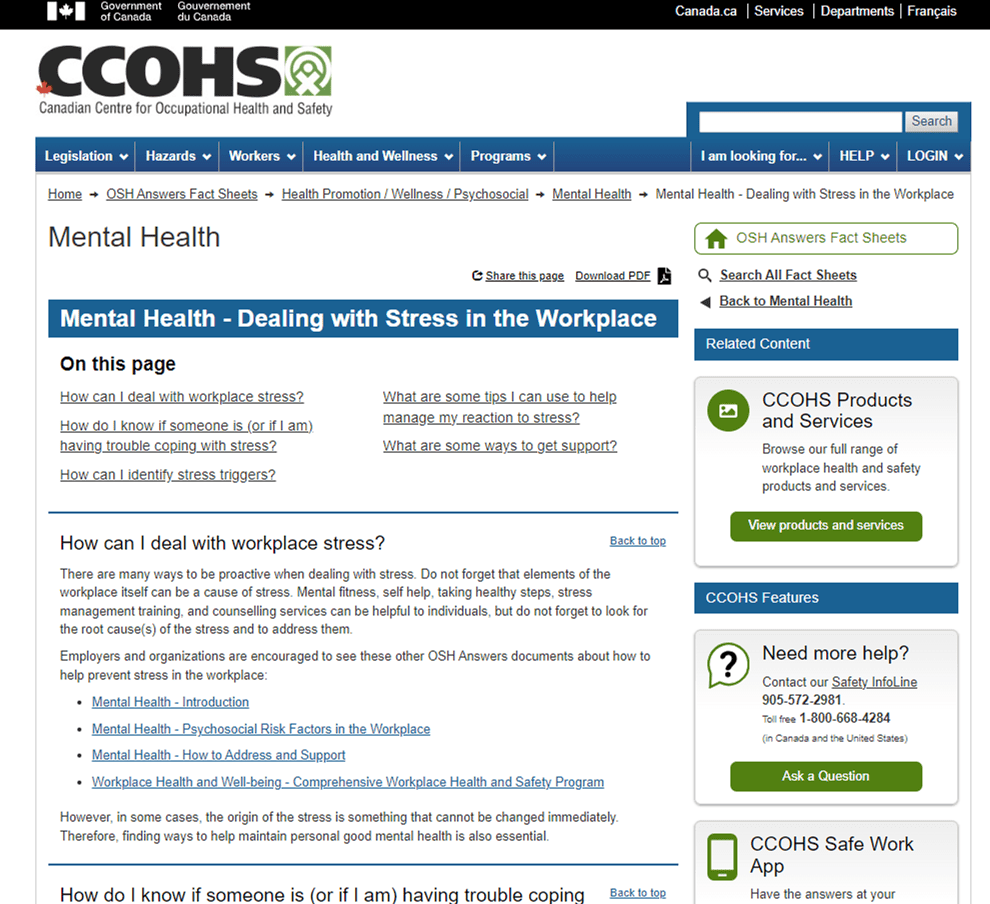
How to Keep Your Employees Engaged in Health and Safety
Strategies on keeping OH&S top of mind for your workforce
This feature was originally published by MRO magazine, a sister publication to OHS Canada.
Health and safety are important in any situation, especially in the workplace. But how do you keep your employees engaged, interested and involved in keeping safe work practices top of mind?
A good practice to keep your employees safe at work is to have a comprehensive, integrated health and safety program for the organization.
This program should include a series of strategies, policies and related activities and initiatives developed by the employer, with involvement from the employees, health and safety committee and the union. The program must be fully communicated to the employees, implemented throughout the organization, integrated into business practices and evaluated on an ongoing basis.
Ideally, the first step in increasing employee involvement in safety is to effectively train staff and promote a strong safety culture when new hires are onboarded.
While you may not be able to implement a change immediately, letting people know their voice is heard and stating the organization’s intentions to improve will continue to foster an environment of worker engagement and involvement.
Studies have shown that the level of employee engagement in training is a key factor in an organization’s safety program effectiveness.
Training that uses spoken or written multimedia presentations, but requires little or no active participation by the employee, has minimal impact on reducing workplace incidents. On the other hand, training that engages the employee and involves hands-on practice in a realistic setting resulted in the highest retention. Therefore, it only makes sense to ensure your training programs and courses include elements that actively involve the employee and include their participation.
Communicating safe work practices does not start and stop with a new hire. While it is a crucial element during the orientation process, it is equally important to provide ongoing safety and refresher trainings to existing employees. Implementing these strategies into training and re-training on an on-going basis will help everyone develop a safety-first attitude.
Tips to ensure that your organization is adhering to health and safety guidelines:
- Always ensure that your comprehensive workplace health and safety program is often referenced by your management team and that it is easily accessible to all employees. This can help set the tone that safety and the well-being of the employees are a
top priority. - Organize regular re-training sessions for managers and supervisors on conducting safety audits, workplace inspections and incident investigations. Wherever possible, involve them in the health and safety program, and have them participate in new-hire safety orientations and lead safety toolbox talks. By taking the lead, management shows through its actions that they are supportive and committed to protecting their people and creating the safest workplace possible.
- It is important to routinely check-in with your employees and ask how the safety procedures are going and what is, or is not, working for them. See if there is anything you can do to make their work easier and less time consuming (without sacrificing safety or introducing new hazards).
- When developing new safety procedures, make sure to focus on safety practices as well as workplace culture. Include your employees in these discussions and efforts.
- Encourage staff to speak up when they see unsafe work or risky behaviour, and report any health and safety concerns. Get their feedback and use it to improve your safety practices. This reinforces the internal responsibility system, where everyone has a responsibility for health and safety as part of their job, and work together to prevent work-related injuries and illnesses.
- Communication and involvement are key to successful employee engagement. Focus groups, surveys and interviews can provide information on the most ideal ways to gather input and provide training that is most useful to your employees, and use the results to tailor your training program specifically to your workforce. You may also gain insights into which values guide and motivate employees on a day-to-day basis.
- Be sure to always follow-up and acknowledge their feedback. While you may not be able to implement a change immediately, letting people know their voice is heard and stating the organization’s intentions to improve will continue to foster an environment of worker engagement and involvement.
Remember, there is no one-size-fits-all solution. Each workplace is unique in terms of tasks, needs, values and culture. Taking the time to keep employees engaged in program development, interested in ongoing training and involved with continuous improvement will help everyone keep safety top of mind.
The Canadian Centre for Occupational Health and Safety (CCOHS) promotes the total well-being — physical, psychosocial, and mental health — of workers in Canada by providing information, advice, education, and management systems and solutions that support the prevention of injury and illness.
Stay up to date and sign up for one of our newsletters for more topics on occupational health and safety, free resources and more!
Latest Resources
Cone Zone – Roadside Workers
Road Safety at WorkPlease slow down and pay attention in all roadside work zones. It’s the law Do you ...
Mental Health – Dealing with Stress in the Workplace
Canadian Centre for Occupational Health and Safety (CCOHS)Visit the Canadian Centre for Occupational Health and Safety (CCOHS) website for reso ...

